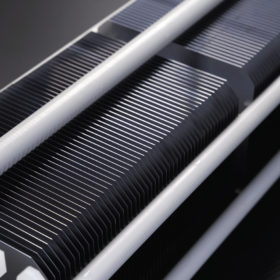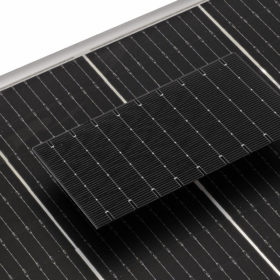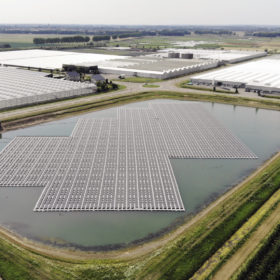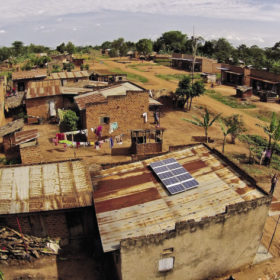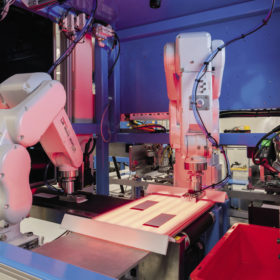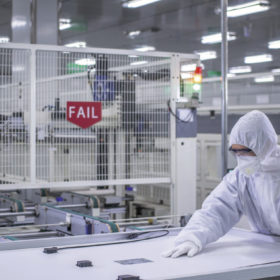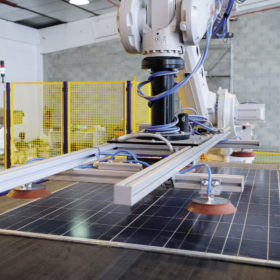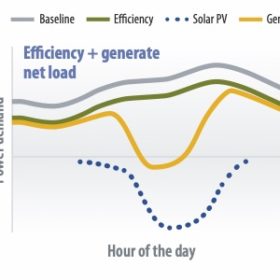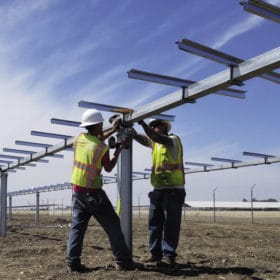Carriers key for quality cell surfaces
The path to lower solar LCOE can be painful; just ask a PV manufacturer. However, ever-larger crystalline wafers may cause more pain than they are worth, argues Gerry Knoch, the managing director of wet bench provider exateq. For high efficiency, eliminating cross contamination in wet processes is vital and can be achieved – with carriers playing an important role.
Tile for more cells
Panels featuring tiling could be one of the most innovative module-level technologies to enter into commercial-scale production in 2020. The premise is simple: Squeeze more half-cut cells into the module for an efficiency and power output boost. But it’s not entirely straightforward, and similar approaches such as shingling have a significant head start.
Shadow boxing
The amount of non-uniform shading an array will experience determines the technology choices that can be made. However, it can be complicated to formulate more general rules for when to use what type of technology. Most would agree that module-level power electronics are better at handling non-uniform shading, but how do they handle the sun? A recently promoted study brought the discussion into sharp relief.
Machine learning: ‘New electricity’ enabling access
Andrew Ng, a leading educator in machine learning, has described the technology as “the new electricity” for its ability to transform modern society. The roughly 780 million people globally without electricity access would happily settle for just the “old” electricity. But a growing amount of data from smart meters, satellite imagery, and other sources has allowed machine learning to play a bigger role in advancing energy access, as Dustin Zubke reports.
The state of solid-state batteries
Solid-state batteries hold the potential to overcome many of the limitations of today’s lithium-ion storage technologies. Though they have been a research topic for more than 30 years, and more recently have seen billions of dollars poured into their development by leading carmakers and electronics giants, commercial development is still extremely limited. Major roadblocks remain in the way of both device performance and industrial-scale processing. pv magazine recently caught up with solid-state’s research community for a look at where the technology stands.
The visible hand heralds a new dawn
The “invisible hand” is a widely understood metaphor for free-market economics. In China’s economy a “visible hand” is more evident, as government interventions are relatively commonplace. And in PV the visible hand is moving again, raising efficiency baselines and potentially changing the solar production game.
Circular innovations
Slowly but surely, environmental concerns are making their way into mainstream thought throughout the PV industry. A look at recycling offers an example of this, with stakeholders trying to get ahead of the high volumes of end-of-life modules already on the horizon. pv magazine examines the technologies that will be needed, alongside policy and economic support, to keep the bulk of these modules out of landfill and ultimately to establish a circular economy for PV materials.
Keeping California’s lights on in emergencies with DERs
The fossil fuel industry jumped at the opportunity to blame clean, renewable energy sources, like solar power, in the aftermath of California’s mid-August blackouts. But the attack on solar did not pass the smell test. Fossil fuel power plants under contract with utility companies were the resource that failed to deliver much-needed electricity, writes Bernadette del Ciaro, executive director of the California Solar & Storage Association. And this resulted in blackouts.
Disrupting developments
The current developer-EPC model has increasingly turned to focus on quality over a two-year horizon. This contrasts with long-term owners who are focused on quality over the lifetime of their projects (20 to 40 years). With long-term owners now buying projects in the pre-construction phase, the current model looks set for disruption. Olivier Crepon, managing director at Skyray Engineering, reviews the emerging model of project development and explains how it will impact developers, EPCs, and third-party services and ultimately lead to a stronger, more mature PV sector.
Expectations for a new-look Intersolar North America
Wes Doane of Diversified Communications, the new owners of Intersolar North America, provides a look at what goes into taking over one of PV’s longest-running trade shows and what to expect from the revamped event in 2020.
